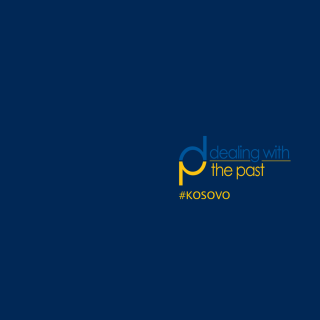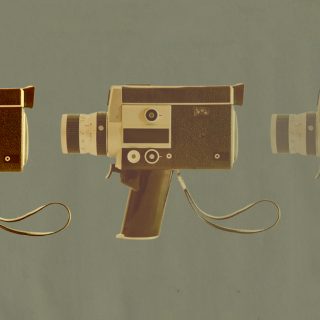“Yugoslav” Series in Post-Yugoslav Times
Television series (and many other forms of popular culture) originating in the territory that was once the Socialist Federal Republic of Yugoslavia (SFRY) are still considered somewhat domestic by a broader public. This is primarily due to the fact that no translation is needed for markets in Serbia, Montenegro, Bosnia and Herzegovina, and Croatia). They are also considered regional, although this term encompasses a slightly broader territory, sometimes including Albania or Bulgaria, for example. The focus of this text will be on the specific case of recent series that are works of collaboration among the countries of the former SFRY in an artistic and production sense, as well as their immediate subject matter, resulting them to be also considered post-Yugoslav.
As far as television series from the post-1990s era are concerned, collaboration was established in the first decade of the 21st century. Around that time, Serbian actors began to “guest star” in Croatian series, primarily in the genre of soap operas, such as “Love in the Offside” (D. Peckaj Vuković, 2005), “The Pride of the Ratkajs” (M. Foretić, J. Svilar, J. Veljača, 2007), and “The Law of Love” (R. Majetić, J. Veljača, 2008), or in crime dramas, such as “Conspiracy” (R. Majetić, 2007). With the increase in quality (as well as quantity!) of scripted television productions, which peaked between 2015 and 2021, particularly in Serbia (Daković, Milovanović, 2021), collaboration was achieved in a number of notable series that fall into the quality or peak TV category. Although quality may sound like a debatable and subjective assessment, in academic terms, this term refers to series that are, among other things, innovative, transcending genre boundaries, influenced by the legacy of film aesthetics, and have a certain impact on society and popular culture (Thompson, 1997).
Among the most successful series in the region (in terms of viewership, popularity, reactions in official and social media, as well as festival awards, and “export” to foreign markets) are those that have achieved inter-state collaboration in multiple fields. These include the series “Besa” (T. Jordan, I. Stoimenov, 2018), “Black Sun” (D. Bjelogrlić, 2017), and “The Last Socialist Artefact” (D. Matanić, 2021). The series “Besa,” although an exceptional example of broad international collaboration (including some countries outside the region), differs thematically as it belongs to the crime genre and does not directly (re)examine the values, ideas, and practices of post-Yugoslavism. “Black Sun” and “The Last Socialist Artefact” delve into the theme of post-Yugoslavism, albeit from two very different perspectives and genres. The former is a pseudo-historical crime thriller, while the latter is a contemporary social drama. “Black Sun” explores the interwar period in the 1920s and 1930s, while “The Last Socialist Artefact” focuses on the present time but with significant references to the late self-managing socialism era.
Promoted under the slogan “the history they didn’t teach us,” the series “Black Sun” skilfully combines an attractively wrought fictional crime plot with historical and imaginative pseudo-historical facts. It conceptually suggests that the first Yugoslavia (initially the Kingdom of Serbs, Croats, and Slovenes) was a politically volatile and inflammable territory in its early days, where numerous internal and external interests intersected. Such interests included personal, business, party, state, and even quasi-state interests, with allusions to the role of international secret societies and mysterious sects. The capital, Belgrade, becomes the intersection of dramatic and mysterious events involving not only the local population but also numerous invited and uninvited guests from Bosnia, Croatia, Montenegro, Slovenia, and Macedonia. These guests range from ultra-rightists, nationalists/separatists, to communists (it is important to emphasize that they were underground at that time). Naturally, there are also foreign elements, from fleeing White Russians to pro-Nazi sects, constantly intertwining facts and fiction in the script. For these reasons, the series gained immense popularity and has sparked discussions in academic circles, media, and social networks. However, it has also generated certain negative reactions from representatives of communities who felt they were portrayed negatively and that it involved historical falsification[1].
In a completely different artistic and narrative key, “The Last Socialist Artefact” tackles post-transitional reality through a realistic dramatic structure. Although the story takes place in a specific (fictional) small town in Croatia, the overall plot and idea resonate completely with the reality in other countries in the region. The losses of transition and a daring comparison of the pessimistic consequences of today’s liberal capitalism with the optimism of the former self-managed socialism are interestingly explored without the effect of being patronizing toward the past or imposing current political agendas. Unlike “Black Sun,” where the authors do not display a clear ideological preference (except when it comes to ultra-rightist and ultra-nationalist organizations depicted in a negative light), presenting both the royalist authorities and the communist opposition with partial criticism, “The Last Socialist Artifact” clearly conveys a leftist idea. However, in the end, we do not have an idealized portrayal of a possible solution through a return to the old model. Instead, through an unexpected plot twist, we are given a subtly ironic statement that former values can now only be recognized (and monetized!) through artistic practice, which is once again controlled by capitalist-oriented actors (established Western artists and gallery owners). Thus, ideological heritage becomes a literal “last socialist artefact” (as the series is titled in international distribution – “The Last Socialist Artefact”), a kind of modern monument but also a bitter reminder of the inevitability of accepting the present system.
Apart from their themes, both these series are characterized as post-Yugoslav by way of their cast. In “Black Sun,” we have actors from Serbia, Croatia, Montenegro, Slovenia, and Macedonia, while “The Last Socialist Artefact” primarily features Croatian actors with guest stars from Serbia and Bosnia and Herzegovina (it should be noted that some of the actors in both series have already achieved regional status and, through frequent engagements in multiple countries, are no longer perceived as “foreigners”). Furthermore, the production and broadcasting companies’ collaboration has contributed to the wider accessibility of both series.[2]
Although one might think that the creation of these series, as well as some others like the HBO series “Success” (M. Alčevski, 2019), is the result of deliberate and planned efforts by governmental or non-governmental institutions, it seems that the collaboration has occurred organically. This can be attributed to practical business reasons (easier access to funding and a larger market for distribution) as well as an authentic need for creative connection among individuals from the post-Yugoslav regions, who increasingly realize that they share not only a common past but also a significant portion of their present. These examples should not be interpreted as promoting Yugoslav nostalgia or attempting to rewrite history and/or the present. Rather, they should be seen as a natural and constructive response to the challenges that the current geopolitical situation continuously presents our region with.
Sources:
- Daković, N., Milovanović, A., „Soft Power of the Balkans“ (2021), magazine Kultura, 183/2021, Belgrade
- International Movie Database, www.imdb.com,15. 5.2023.
- Joksimović, N. (2017) Historical inaccuracies in Black Sun, Dnevno. rs, https://www.dnevno.rs/istorija/istorijske-greske-u-senkama-nad-balkanom-sta-je-istina-a-sta-fikcija-u-prici-o-rusima-u-beogradu/, 15. 5. 2023.
- Tanasić, N. (2017) Cultural politics of the series Black Sun, NSPM, http://www.nspm.rs/kulturna-politika/senke-nad-balkanom-ili-izmedju-sotre-i-holivuda.html?alphabet=l (15. 5. 2023)
- Thompson, R. J. (1997) Television’s Second Golden Age: From Hill Street Blues to ER, Syracuse, NY: Syracuse University Press
Milena Kvapil is a director and creative director from Belgrade with over twenty years of work experience in media and advertising industry. She is currently pursuing a doctoral degree in the Theory of Dramatic Arts, Culture, and Media at the Faculty of Dramatic Arts in Belgrade. She is currently in the phase of writing her doctoral dissertation on the topic “Soft Power of Television Series: Serbia 2015-2022.”
[1] Primarily, I am referring to the reactions of representatives of the Russian minority who condemned the series due to its alleged negative portrayal of the Russian emigration period after the October Revolution, viz: Joksimović, 2017, Tanasić, 2017.
[2] The series “The Last Socialist Artefact” is a Croatian-Slovenian-Serbian-Finnish co-production, which premiered on HRT at the end of December 2021, while it was broadcast in Serbia in 2022 on the national broadcaster RTS. “Black Sun” is a co-production between Serbia, Macedonia, and Bosnia and Herzegovina/Republika Srpska, and premiered in 2017 on RTS. Later, it was officially aired on TV stations in Bosnia and Herzegovina, Macedonia, Montenegro, Croatia, and Slovenia.


